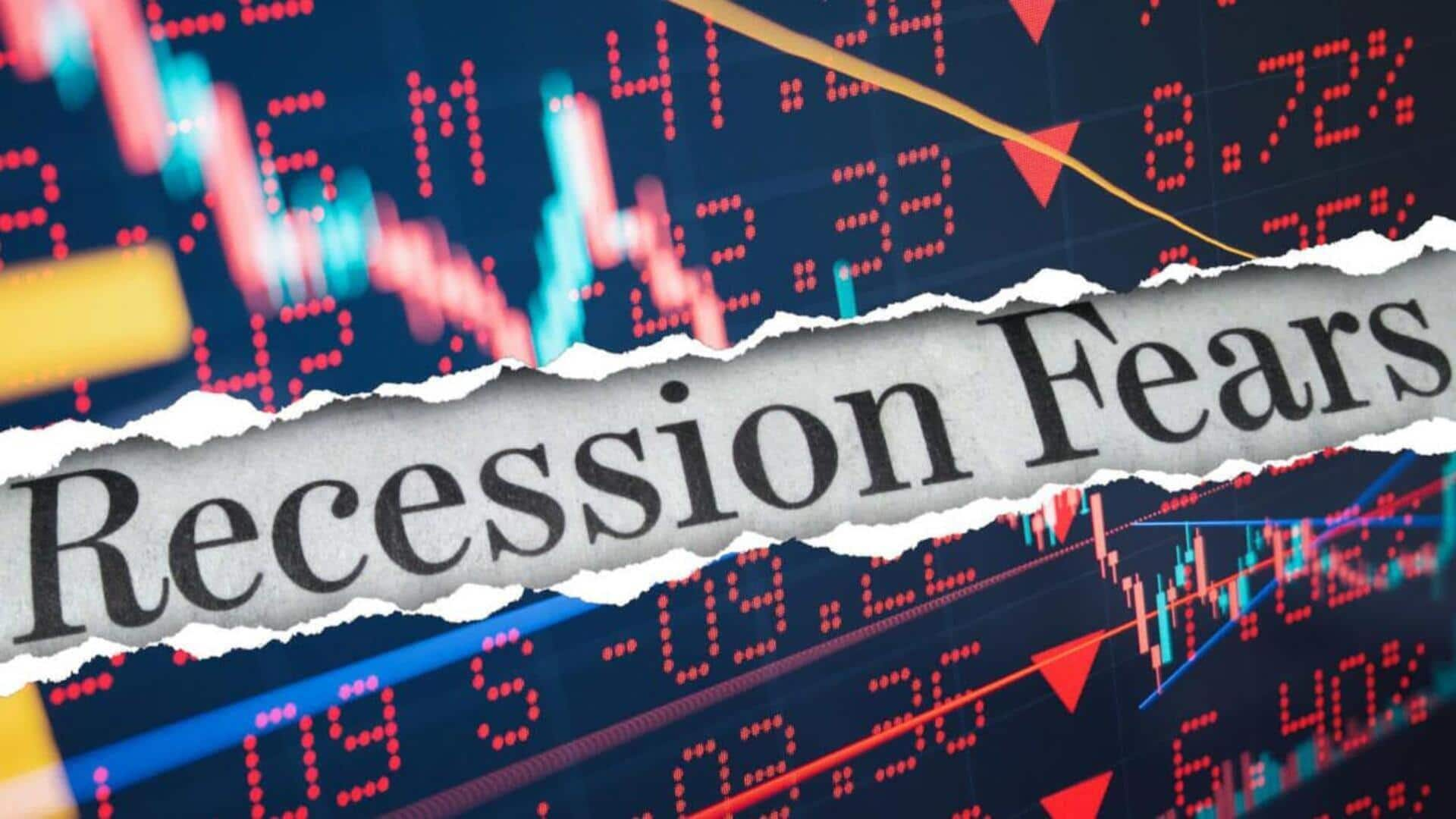Introduction
The U.S. economy is teetering on the brink of a potential recession, with a leading global investment bank estimating a 93% probability of an economic downturn within the next year. This stark prediction has sent ripples through financial markets and raised concerns among policymakers and investors alike. But what factors are contributing to this heightened risk, and what could it mean for the average American?
Background & Context
Recession fears are not new; economists and analysts have been warning about the possibility for months. However, the recent forecast by a prominent global investment bank has brought the issue into sharper focus. The bank's analysis points to several key indicators that suggest the U.S. economy is on an unsustainable path.
Main News Story
Economic Contraction in Q1 2025
The U.S. economy contracted by 0.3% in the
first quarter of 2025, according to data from the Bureau of Economic Analysis.
This marks the first economic shrinkage since the early
days of the COVID-19 pandemic. Factors contributing
to this decline include a surge in imports ahead of anticipated tariffs,
reduced consumer spending, and a slowdown in government expenditures.
Inflationary Pressures
Inflation remains persistently high, with
core inflation rates exceeding the Federal Reserve's target. Despite aggressive interest rate hikes, inflation has not been
effectively curtailed, leading to concerns about stagflation—a scenario where
high inflation coincides with stagnant economic growth.
Labor Market Weakness
The labor market, a traditional pillar of
economic strength, is showing signs of strain. Job
growth has slowed, and unemployment claims have ticked upward, indicating
potential softening in employment conditions.
Yield Curve Inversion
An inverted yield curve—a classic recession signal—has persisted, with short-term interest rates surpassing long-term rates. This inversion suggests that investors are losing confidence in the economy's near-term prospects.
Expert Opinions & Reactions
Economists and financial analysts have
expressed growing concern over the current economic trajectory. Dr. Jane Smith, Chief Economist at XYZ University, notes,
"The confluence of high inflation, slowing growth, and labor market
weakness is a classic recipe for recession." Similarly,
John Doe, Senior Analyst at ABC Investment Firm, states, "The yield curve
inversion is a red flag that investors should not ignore."
Policymakers are also taking notice. The Federal Reserve has signaled a cautious approach to future interest rate hikes, acknowledging the delicate balance between controlling inflation and supporting economic growth.
Impact & Significance
A recession would have far-reaching
implications for the U.S. economy and its citizens. Potential impacts include:
· Job Losses: Increased
unemployment rates as businesses cut back on hiring or lay off workers.
· Reduced Consumer Spending: Decreased household income leading to lower consumer demand.
· Stock Market Volatility: Fluctuations in equity markets affecting investment portfolios.
· Government Budget Constraints: Potential reductions in public services and social programs.
The global economy could also feel the effects, as the U.S. is a major economic player with interconnected trade relationships.
Advantages & Disadvantages
Advantages:
· Lower Inflation: A
recession could lead to reduced demand, helping to bring down inflation.
· Interest Rate Cuts: To stimulate growth, the Federal Reserve may lower interest
rates, making borrowing cheaper.
Disadvantages:
· Economic Contraction: A slowdown in economic activity can lead to job losses and
reduced income.
· Market Uncertainty: Volatility in financial markets can erode investor confidence.
· Government Debt: Increased spending on social programs during a downturn can exacerbate budget deficits.
Case Studies or Real-Life Examples
· 2008 Financial Crisis: The last major U.S. recession was triggered by the collapse of
the housing bubble and subsequent financial market turmoil. It led to widespread job losses and a prolonged economic
recovery.
· COVID-19 Pandemic Recession: The global health crisis caused an abrupt economic downturn,
with massive job losses and government interventions to stabilize the economy.
These examples underscore the potential severity of economic downturns and the challenges in managing their impacts.
Common Misunderstandings
· Recession Equals Depression: A recession is a natural part of the economic cycle and does not
necessarily lead to a depression.
· Recessions Are Always Caused by Financial Crises:
While financial crises can trigger recessions, other
factors like policy decisions and external shocks can also play a role.
· Recessions Are Always Bad: Some economic restructuring during a recession can lead to long-term improvements in efficiency and productivity.
Conclusion & Future Outlook
The 93% recession probability forecast serves as a stark reminder of the challenges facing the U.S. economy. While not inevitable, the risk of a downturn is significant and warrants attention from policymakers, businesses, and individuals. Proactive measures, such as targeted fiscal stimulus, strategic interest rate adjustments, and support for affected industries, can help mitigate the impact. However, the path forward requires careful navigation to balance economic growth with financial stability.
Expert Tip from Learn with Manika: "In times of economic uncertainty, diversifying your investment portfolio and maintaining an emergency savings fund can provide a financial cushion against potential downturns."

